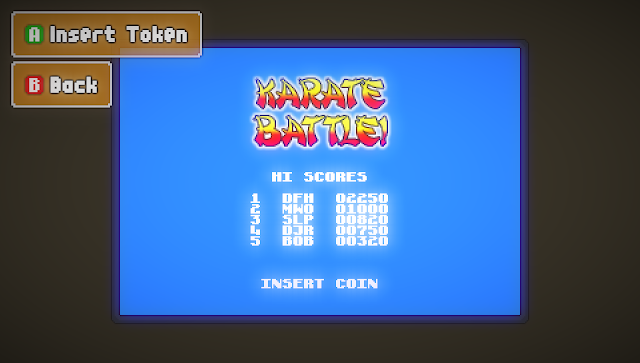Friday, October 4, 2013
Fractopia - fractal rendering with the GPU on PlayStation Vita
The above video shows Fractopia, my GPU-powered fractal explorer for PlayStation Vita and PlayStation Mobile certified Android devices. Sorry about the poor focus - it's hard to film yourself playing something on the Vita!
I had the idea to try GPU-accelerated fractal rendering on the Vita a while back, but I didn't get around to actually messing with it until a few weeks ago. My initial experiments turned out quite well, so I took the time to make it into a full-fledged application.
As you can see in the video, Fractopia allows smooth panning and zooming of fractal imagery. It allows you to navigate the Mandlebrot and Julia fractals, and lets you change the Julia seed in real time to create a huge variety of interesting "fractalscapes" to explore.
Fractopia has passed PS Mobile certification, so it should come out on PSN in the next few weeks.
Tuesday, August 27, 2013
Vacation Vexation - a new "Quiet, Please!" adventure

I've been hard at work recently on a new "Quiet, Please!" adventure. The current likely name is "Vacation Vexation", and it features the same style of gameplay as the original.

This time the setting is a family vacation in a seaside town. You just want to relax on the beach and read a book, but of course circumstances conspire against you...

In addition to the puzzle-solving gameplay, there is an arcade that features playable mini-games:

There are a couple of knock-offs of arcade classics, and one that people who have played my other games might recognize...

With this new game, I'm going for roughly 2-3 times the amount of content that was in the original "Quiet, Please!". This isn't because "Quiet, Please!" was too short. Some people complained about the length, but most found it worth the dollar and it is my best selling game to date. I want to try to get away from selling games for $.99, though, and that requires more content.
While there are a number of reasons I want to target a higher price point, probably the most important one is that it allows me to put a game on sale. If a game is already at the lowest price point for an app store, you can't put it on sale without making it completely free. Consumers really like "free" as a price point, but from a seller's perspective it has obvious disadvantages...
I figure I'm roughly two thirds of the way through development on "Vacation Vexation". I hope to release it on all of the platforms I support (which is most of them) in the next few months.
Monday, February 25, 2013
Ascent of Kings Review Round-up
Some reviews of Ascent of Kings have popped up around the internet over the past week. You can check out what they had to say from the links below:
Chet & Jon
Indie Gamer Chick
IndieGames.com
CGR Undertow
gameding
Chet & Jon
Indie Gamer Chick
IndieGames.com
CGR Undertow
gameding
Friday, February 8, 2013
Working on Playstation Mobile

Yep, that's my game intro screen running on the Vita. I have spent the past couple of days porting my 2D game engine to PlayStation Mobile.
The PSM platform is C# based, so it was a really good match for me. Even though PlayStation Mobile uses MonoDevelop and I use Visual Studio, the two environments are assembly-compatible and I can still do the bulk of my work in Visual Studio and mostly just use MonoDevelop as a means for final deployment.
The hardest part of the process was getting the drawing code working. PSM provides a pretty low-level graphics interface, so it took me a while before I had my first triangle onscreen. When working with a new graphics api, the first triangle is always the hardest. There are a million different reasons (matrix transforms, shader issues, culling, bad vertices, bad indices, etc.) why your triangle won't render. Once you can see something, you can fix what is wrong. When you can't see anything you don't have much to go on.
After getting my first rendering working, the next step was sprite batching. PlayStation Mobile provides a batching implementation, but it is integrated with a higher-level scene interface. That is a great help to people who are doing new game development, but for someone like me who already has a game engine that I'm trying to put on top of PSM it doesn't work. Fortunately, I've written sprite batching systems before, so it wasn't too much of an obstacle.
Then it was off to the races. Input was easy. I've already integrated with multiple touch systems, so PSM touch input went in smoothly. I haven't done buttons/thumbsticks yet, but I don't anticipate too much of a challenge. Sound was easy - the PSM audio interface is clean and exactly what you look for.
I started working with PSM yesterday, and I had my first game (my ubiquitous test game "Sokoban for Beginners") running in the simulator this afternoon. With that validation, I pulled the trigger on a PlayStation Mobile publishing license. After a few hours and a bit of messing about with publishing and application keys, I had a game running perfectly on my Vita.
Look for some "Ascent of Kings", "Quiet, Please!", "Kung Fu FIGHT!" - and just maybe a bit of "Tunescape" and more speculatively some "Block Zombies" on a PlayStation Mobile device near you.
Friday, January 11, 2013
Ascent of Kings Update

"Ascent of Kings", the game I made for Ludum Dare #20, is now back on the top of my development stack. I've been making great progress and have added a bunch of new content. I'm hoping to finish things up over the next couple of weeks.
Since I snubbed the Xbox with "Quiet Christmas" (I ran out of time before the holiday) my current plan is to release Ascent there first, with mobile versions soon thereafter.